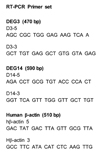1. Choi YJ, Park YL, Koh JH. Prevalence of thyroid cancer at a medical screening center: pathological features of screen-detected thyroid carcinomas. Yonsei Med J. 2008. 49:748–756.

2. Inskip PD. Thyroid cancer after radiotherapy for childhood cancer. Med Pediatr Oncol. 2001. 36:568–573.

3. Inohara H, Honjo Y, Yoshii T, Akahani S, Yoshida J, Hattori K, et al. Expression of galectin-3 in fine-needle aspirates as a diagnostic marker differentiating benign from malignant thyroid neoplasms. Cancer. 1999. 85:2475–2484.

4. Davies H, Bignell GR, Cox C, Stephens P, Edkins S, Clegg S, et al. Mutations of the BRAF gene in human cancer. Nature. 2002. 417:949–954.

5. Kroll TG, Sarraf P, Pecciarini L, Chen CJ, Mueller E, Spiegelman BM, et al. PAX8-PPARgamma1 fusion oncogene in human thyroid carcinoma [corrected]. Science. 2000. 289:1357–1360.
6. Ippolito A, Vella V, La Rosa GL, Pellegriti G, Vigneri R, Belfiore A. Immunostaining for Met/HGF receptor may be useful to identify malignancies in thyroid lesions classified suspicious at fine-needle aspiration biopsy. Thyroid. 2001. 11:783–787.

7. Casey MB, Lohse CM, Lloyd RV. Distinction between papillary thyroid hyperplasia and papillary thyroid carcinoma by immunohistochemical staining for cytokeratin 19, galectin-3, and HBME-1. Endocr Pathol. 2003. 14:55–60.

8. Hwang IT, Kim YJ, Kim SH, Kwak CI, Gu YY, Chun JY. Annealing control primer system for improving specificity of PCR amplification. Biotechniques. 2003. 35:1180–1184.

9. Yasui W, Oue N, Ito R, Kuraoka K, Nakayama H. Search for new biomarkers of gastric cancer through serial analysis of gene expression and its clinical implications. Cancer Sci. 2004. 95:385–392.

10. Nakoman C, Resmi H, Ay O, Acikel U, Atabey N, Güner G. ner G. Effects of basic fibroblast factor (bFGF) on MMP-2, TIMP-2, and type-I collagen levels in human lung carcinoma fibroblasts. Biochimie. 2005. 87:343–351.
11. Ryu B, Jones J, Hollingsworth MA, Hruban RH, Kern SE. Invasion-specific genes in malignancy: serial analysis of gene expression comparisons of primary and passaged cancers. Cancer Res. 2001. 61:1833–1838.
12. St Croix B, Rago C, Velculescu V, Traverso G, Romans KE, Montgomery E, et al. Genes expressed in human tumor endothelium. Science. 2000. 289:1197–1202.

13. Eleveld-Trancikova D, Triantis V, Moulin V, Looman MW, Wijers M, Fransen JA, et al. The dendritic cell-derived protein DC-STAMP is highly conserved and localizes to the endoplasmic reticulum. J Leukoc Biol. 2005. 77:337–343.

14. Hartgers FC, Vissers JL, Looman MW, van Zoelen C, Huffine C, Figdor CG, et al. DC-STAMP, a novel multimembrane-spanning molecule preferentially expressed by dendritic cells. Eur J Immunol. 2000. 30:3585–3590.

15. Kukita T, Wada N, Kukita A, Kakimoto T, Sandra F, Toh K, et al. RANKL-induced DC-STAMP is essential for osteoclastogenesis. J Exp Med. 2004. 200:941–946.

16. Yagi M, Miyamoto T, Sawatani Y, Iwamoto K, Hosogane N, Fujita N, et al. DC-STAMP is essential for cell-cell fusion in osteoclasts and foreign body giant cells. J Exp Med. 2005. 202:345–351.

17. Hartgers FC, Looman MW, van der Woning B, Merkx GF, Figdor CG, Adema GJ. Genomic organization, chromosomal localization, and 5' upstream region of the human DC-STAMP gene. Immunogenetics. 2001. 53:145–149.

18. Fagin JA. Perspective: lessons learned from molecular genetic studies of thyroid cancer-insights into pathogenesis and tumor-specific therapeutic targets. Endocrinology. 2002. 143:2025–2028.

19. Bongarzone I, Pierotti MA. The molecular basis of thyroid epithelial tumorigenesis. Tumori. 2003. 89:514–516.

20. Nikiforova MN, Caudill CM, Biddinger P, Nikiforov YE. Prevalence of RET/PTC rearrangements in Hashimoto's thyroiditis and papillary thyroid carcinomas. Int J Surg Pathol. 2002. 10:15–22.

21. Santoro M, Papotti M, Chiappetta G, Garcia-Rostan G, Volante M, Johnson C, et al. RET activation and clinicopathologic features in poorly differentiated thyroid tumors. J Clin Endocrinol Metab. 2002. 87:370–379.

22. Tallini G. Molecular pathobiology of thyroid neoplasms. Endocr Pathol. 2002. 13:271–288.

23. Peyssonnaux C, Eychène A. The Raf/MEK/ERK pathway: new concepts of activation. Biol Cell. 2001. 93:53–62.

24. Hilger RA, Scheulen ME, Strumberg D. The Ras-Raf-MEK-ERK pathway in the treatment of cancer. Onkologie. 2002. 25:511–518.

25. Timler D, Tazbir J, Matejkowska M, Gosek A, Czyz W, Brzeziński J. Expression of proteins: D1 cyclin and Ki-67 in papillary thyroid carcinomas. Folia Histochem Cytobiol. 2001. 39 Suppl 2:201–202.
26. Liang P, Averboukh L, Keyomarsi K, Sager R, Pardee AB. Differential display and cloning of messenger RNAs from human breast cancer versus mammary epithelial cells. Cancer Res. 1992. 52:6966–6968.
27. Wan JS, Sharp SJ, Poirier GM, Wagaman PC, Chambers J, Pyati J, et al. Cloning differentially expressed mRNAs. Nat Biotechnol. 1996. 14:1685–1691.

28. Liang P, Pardee AB. Recent advances in differential display. Curr Opin Immunol. 1995. 7:274–280.

29. Zhao S, Ooi SL, Pardee AB. New primer strategy improves precision of differential display. Biotechniques. 1995. 18:842–846. 848850
30. Nagy N, Decaestecker C, Dong X, Kaltner H, Schüring MP, Rocmans P, et al. Characterization of ligands for galectins, natural galactoside-binding immunoglobulin G subfractions and sarcolectin and also of the expression of calcyclin in thyroid lesions. Histol Histopathol. 2000. 15:503–513.
31. Parmar DV, Khandkar MA, Pereira L, Bangur CS, Katyare SS. Thyroid hormones alter Arrhenius kinetics of succinate-2,6-dichloroindophenol reductase, and the lipid composition and membrane fluidity of rat liver mitochondria. Eur J Biochem. 1995. 230:576–581.
32. Huang Y, Prasad M, Lemon WJ, Hampel H, Wright FA, Kornacker K, et al. Gene expression in papillary thyroid carcinoma reveals highly consistent profiles. Proc Natl Acad Sci U S A. 2001. 98:15044–15049.




 PDF
PDF ePub
ePub Citation
Citation Print
Print









 XML Download
XML Download